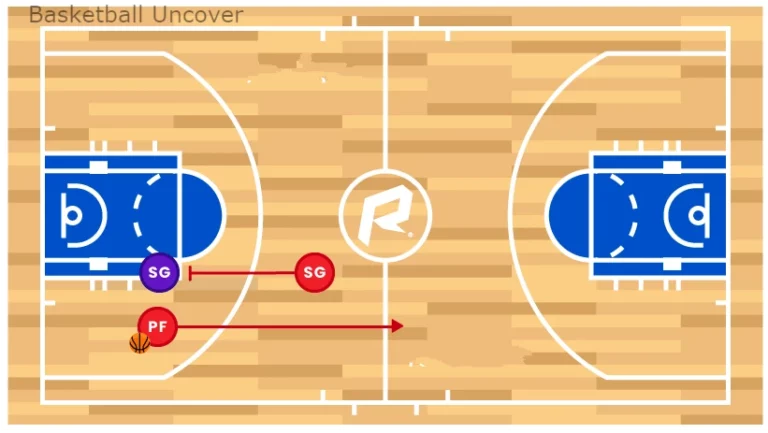How Much Does A Basketball Weight In Pounds?
People who are new to basketball might think that all basketballs weight the same. However, the weight of the ball can change depending on different things.
Basketball weight is crucial for players and coaches to master the game. The official weight of 1.843 Pounds (29.5 ounces) for men and 1.781 Pounds (28.5 ounces) for women, ensures consistent ball handling, passing, and shooting mechanics.
Regulations in Professional Basketball
In professional basketball, adherence to weight regulations is paramount. A deviation from the standard weight could give one team an unintended advantage, affecting the dynamics of the game. Referees meticulously inspect and measure basketballs before each game to ensure compliance.
Variations in Basketball Weight

However, not all basketballs are created equal. Different types of basketballs, such as those designed for indoor or outdoor play, may vary in weight. The materials used and the intended playing surface contribute to these variations. For instance, outdoor basketballs might be slightly heavier to withstand rougher surfaces.
Different Weights In Basketball Leagues
| League | Weight Information | Notes |
|---|---|---|
| NBA | Official ball weight: 22-23.5 oz (623.7-670.9 g) | Players also engage in strength training with various weights depending on specific exercises and goals. |
| WNBA | Official ball weight: 22-23.5 oz (623.7-670.9 g) | Players also engage in strength training with various weights depending on specific exercises and goals. |
| EuroLeague | Official ball weight: 22-23.5 oz (623.7-670.9 g) | Players also engage in strength training with various weights depending on specific exercises and goals. |
| CBA | Official ball weight: 22-23.5 oz (623.7-670.9 g) | Players also engage in strength training with various weights depending on specific exercises and goals. |
| LNB | Official ball weight: 22-23.5 oz (623.7-670.9 g) | Players also engage in strength training with various weights depending on specific exercises and goals. |
| NCAA | Men’s: Official ball weight: 22 oz (623.7 g); Women’s: Official ball weight: 20 oz (567 g) | Players also engage in strength training with various weights depending on specific exercises and goals. |
| FIBA | Men’s: Official ball weight: 22 oz (623.7 g); Women’s: Official ball weight: 20 oz (567 g) | Players also engage in strength training with various weights depending on specific exercises and goals. |
| YMCA Leagues | Ball weight varies depending on age group and league specifications. | Strength training recommendations also vary based on age and skill level. |
| Local Parks and Recreation Leagues | Ball weight varies depending on age group and league specifications. | Strength training recommendations also vary based on age and skill level. |
Also Read: Is Basketball Winter Sport
Physics Behind the Weight
The weight of a basketball isn’t just a random number. It plays a crucial role in the physics of the game. The weight influences the ball’s bounce, flight trajectory, and the player’s ability to control it. A well-balanced ball contributes to a smoother and more predictable game.
Evolution of Basketball Weight

Over the years, basketball design has undergone significant changes. From the heavy leather balls of the past to today’s high-tech composite materials, innovation has shaped the game. Technological advancements have not only altered the weight but also improved the overall performance and durability of basketballs.
Importance of Knowing Basketball Weight
Knowing the weight of a basketball is more than just trivia for enthusiasts. It has practical implications for players and coaches. Understanding the weight can influence training routines, skill development, and overall game strategy. It’s a factor that serious players can’t afford to overlook.
Basketball Weight and Player Preference
Ask any basketball player about their preferred ball weight, and you’ll likely get a passionate response. Players develop a personal preference based on their playing style, position, and individual comfort. Some may prefer a slightly heavier ball for better control, while others opt for a lighter feel for speed and agility.
Common Myths About Basketball Weight
Myths and misconceptions about basketball weight abound. Some believe that a heavier ball always equals better performance, while others think it’s irrelevant. In reality, understanding the science behind the weight dispels these myths and helps players make informed decisions.
Choosing the Right Basketball Weight for You
Selecting the right basketball weight is a personal decision. Consider your playing style, position, and the surfaces you’ll play on. Experimenting with different weights during practice can provide valuable insights into what feels most comfortable and effective for your game.
Impact of Basketball Weight on Injuries

Research suggests a link between basketball weight and player injuries. Using a ball that’s too heavy may increase the risk of strains and sprains. It’s essential to strike a balance between the ball’s weight and your physical capabilities to minimize injury risks and play safely.
Innovations in Basketball Weight Technology
The basketball industry doesn’t stand still. Innovations in materials and manufacturing techniques continue to push the boundaries of what’s possible. Smart basketballs with embedded sensors, customizable weights, and other technological advancements are on the horizon, promising an exciting future for the sport.
Basketball Weight and Skill Development
For those looking to elevate their game, practicing with basketballs of varying weights can be a game-changer. It challenges players to adapt their techniques, enhances muscle memory, and contributes to overall skill development. Coaches are increasingly incorporating weight-specific drills into training sessions.
FAQs
An NBA basketball, adhering to Size 7 standards, weighs approximately 29.5 ounces or 1.843 pounds. This standardized weight ensures consistency in professional play across the league.
An NBA women’s basketball, adhering to Size 7 standards, weighs approximately 28.5 ounces or 1.781 pounds. This standardized weight ensures consistency in professional play across the league.
The NBA uses a full-grain leather basketball, officially made by Wilson, with 8 panels for consistent grip and bounce.
A regulation basketball should weigh between 1.5 and 3.5 pounds! This ensures optimal grip and bounce for players of all levels.
Conclusion
In conclusion, the weight of a basketball is a nuanced aspect that significantly influences the game. From standard regulations to personal player preferences, understanding this weighty matter is essential for anyone serious about basketball. So, the next time you hit the court, consider the science behind the bounce and flight of the ball.







